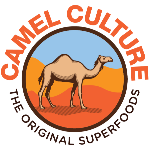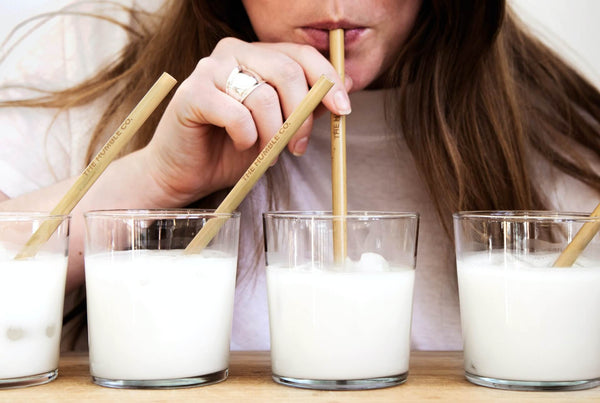Is Camel Milk Low in Lactose? A Natural Option for Sensitive Stomachs.
Introduction:
If you’ve experienced digestive discomfort after drinking cow milk, you’re not alone. Millions of people have difficulty digesting lactose -the natural sugar in milk. As more consumers explore alternatives, camel milk is emerging as a standout option—valued for its nutrient density and unique digestibility.
But is camel milk actually low in lactose? And can people who are sensitive to lactose drink it? Let’s break it down.
Understanding Lactose and Dairy Sensitivities:
Lactose is a type of sugar naturally found in milk. To digest it, your body produces an enzyme called lactase. When your body doesn’t produce enough lactase, it can be difficult to comfortably digest traditional dairy products.
This condition—often called lactose intolerance, lactose sensitivity, or lactose malabsorption—can cause bloating, gas, and general discomfort after consuming milk.
How Much Lactose Is in Camel Milk?
Camel milk contains a lower amount of lactose compared to cow’s milk—roughly 3.5%-4.5% in camel milk vs. 5.0%-5.2% in cow’s milk. While not a lactose-free milk, camel milk may be more suitable for some individuals who are looking to reduce their lactose intake.

In addition to having slightly less lactose, camel milk also contains different types of proteins and fats, which may contribute to its unique digestibility.
Why People Sensitive to Dairy Explore Camel Milk:
Some people who avoid cow’s milk due to discomfort report that they tolerate camel milk better. This may be due to a combination of factors, such as:
• Absence of A1 beta-casein protein, a type of casein found in many cow’s milk varieties.
• Smaller fat molecules, which may be easier to break down.
• A different composition of vitamins, minerals, and enzymes.
While everyone’s digestive system is different, these characteristics make camel milk an option worth considering for those exploring alternatives.
Is Camel Milk Lactose-Free?
No—camel milk is not lactose-free, but it is considered lower in lactose than cow’s milk. Because of its natural composition, some individuals looking to avoid higher-lactose dairy products include camel milk in their diet.
That said, anyone with severe lactose intolerance or dietary restrictions should speak with a healthcare provider before trying any new food product.
Nutritional Profile of Camel Milk:
Camel milk is a natural source of:
• Calcium
• Potassium
• Vitamin B12
• Protein
It also contains certain naturally occurring enzymes and bioactive compounds that make it a unique part of traditional diets in various regions around the world.
Camel Milk vs Other Dairy Alternatives:
|
Milk Type |
Lactose Level |
Notable Features |
|---|---|---|
|
Cow Milk |
High |
Common dairy source, often avoided by those with sensitivities |
|
Goat Milk |
Medium |
Slightly lower lactose than cow’s milk |
|
Almond/Oat Milk |
None |
Plant-based, dairy-free, but lower in protein |
|
Camel Milk |
Lower |
Nutrient-rich, animal-based milk with different protein and fat structure |
Ways to Enjoy Camel Milk:
Camel milk can be used similarly to other milk options:
• Poured over cereal
• Blended into smoothies
• Added to coffee or tea
• Enjoyed on its own, cold or warm
It’s also available in powdered and frozen forms, making it easy to store and use when needed. Frozen camel milk can last up to 6 months in the freezer.
🧊 Explore our full selection of camel milk products at Camel Culture and find the option that works best for your lifestyle.
Who Might Be Interested in Camel Milk?
Camel milk is used by people who:
• Are looking to reduce their lactose intake
• Prefer milk with a different taste and nutritional profile
• Want to try dairy alternatives that aren’t plant-based
• Enjoy exploring traditional foods from other cultures
Always consider your personal dietary needs and consult with a healthcare professional if you have known sensitivities or food restrictions.
Final Thoughts:
Camel milk is a distinctive, naturally lower-lactose alternative to cow dairy. While it’s not suitable for everyone, its nutritional qualities and digestibility make it a compelling option for many. Whether you’re dairy-sensitive or just curious, camel milk offers a new way to experience dairy.
To learn more or try it yourself, visit camelculture.org and browse our premium camel milk products.
FAQs:
Is camel milk completely lactose-free?
No. Camel milk contains lactose, but in lower amounts than cow milk.
How does it taste?
Camel milk has a smooth, slightly sweet and salty flavor and is often described as clean and refreshing. Camel milk does not taste gamey or earthy.
Can I cook or bake with it?
Yes! Camel milk can be used in most recipes that call for dairy milk.
Is camel milk good for people who avoid cow milk?
Some people who avoid cow milk choose to try camel milk as an alternative. But we recommend starting small, with only 3-6 ounces a day, and see how your tummy reacts:)



